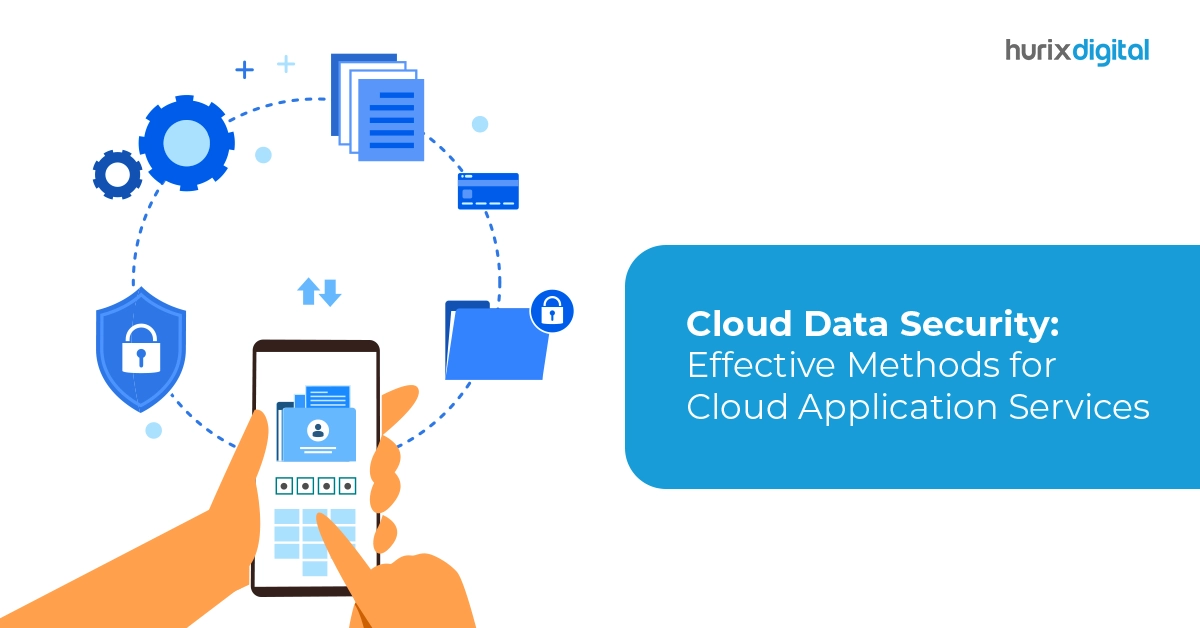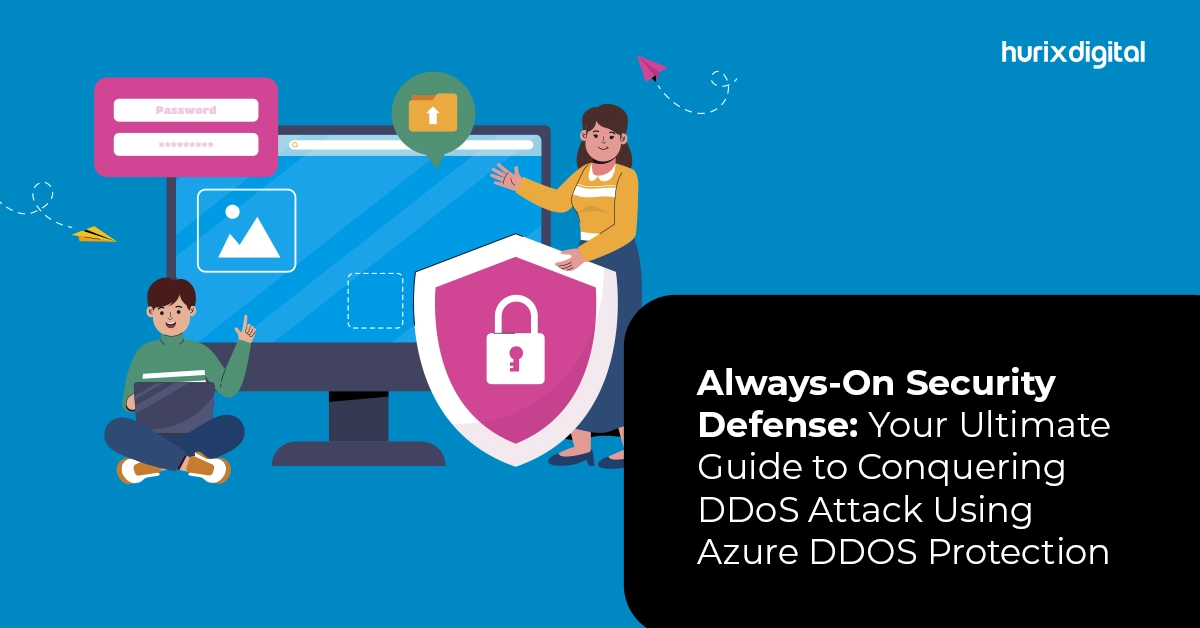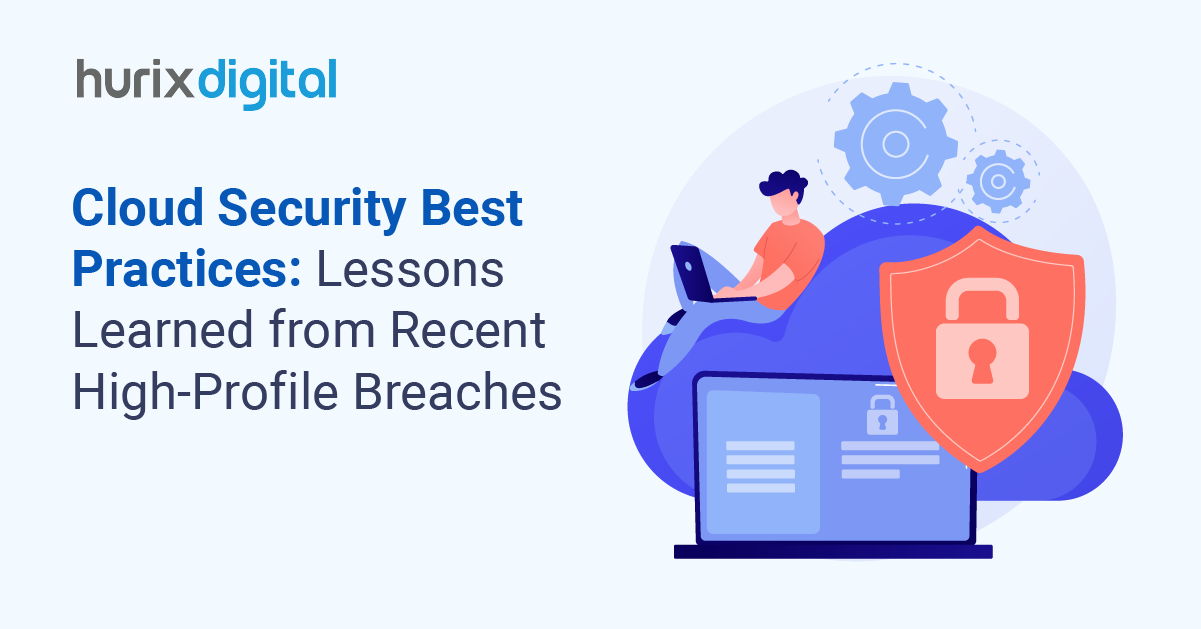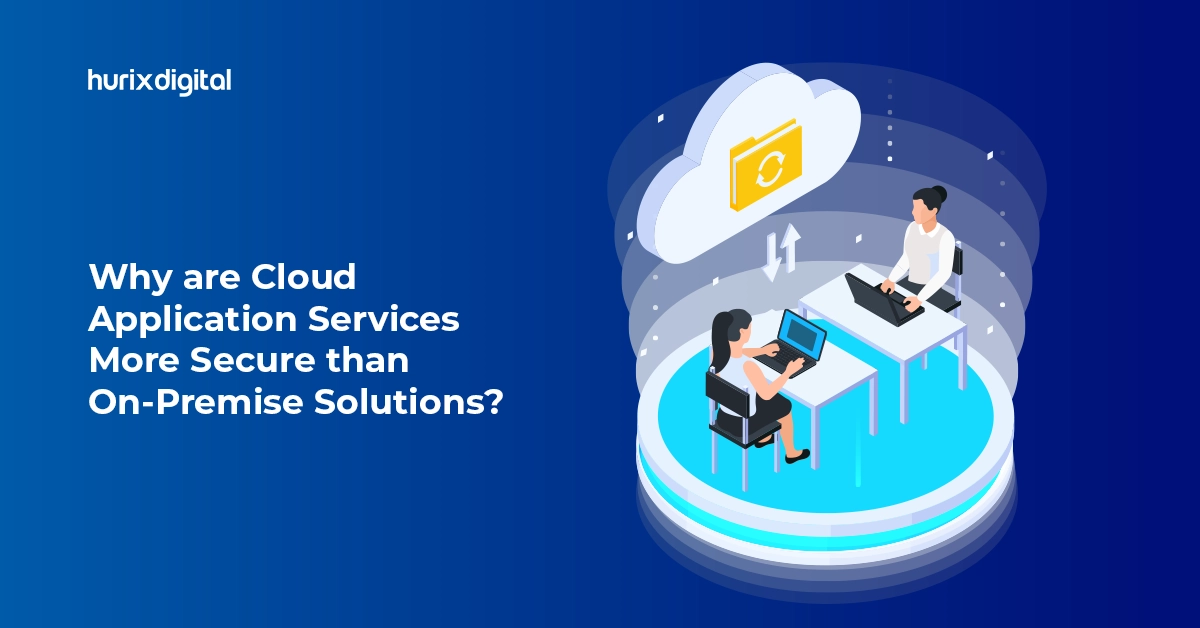
Cloud Data Security: Best Practices for Online Applications
The digital age has fundamentally altered how businesses work. One such example is cloud application services that have transformed the industry. They provide unprecedented flexibility, scalability, and virtually limitless storage capacity. This move, however, brings a new challenge: cloud application security.
This blog will explain the importance of cloud security and provide best practices for avoiding security risks.
Table of Contents
- The Significance of Cloud Security
- Why Cloud Application Services are Crucial for Cloud Security
- The Bottom Line
The Significance of Cloud Security
Data is the lifeblood of modern businesses. That is why even one single security breach may have devastating consequences, including exposing sensitive information and disrupting critical operations.
A recent IBM report highlights the vulnerability of cloud data. In 2023, a staggering 82% of data breaches occurred on cloud platforms. This raises the question: Are you investing enough in cloud application security?
If not, your valuable data could be at risk.
The good news is that there are well-established cloud security best practices you can implement to safeguard your valuable data in the cloud.
Read on to explore essential cloud security standards and guidelines to leverage its potential while minimizing security risk.
Step 1: Understanding Cloud Usage and Risk
A foundational knowledge of your present cloud usage and associated threats allows you to implement targeted cloud security solutions and mitigate vulnerabilities. These are the elements of a comprehensive cloud security assessment:
1. Identifying Sensitive Data
Start by pinpointing sensitive or regulated data within your cloud storage. The loss or theft of intellectual property, financial records, or consumer or employee personally identifiable information (PII) can have serious consequences, such as regulatory fines and reputational damage.
2. Monitoring Data Access and Sharing
Even if sensitive data resides securely in the cloud, it is vital to monitor how it is accessed and shared. Assess current user permissions on files and folders within your cloud environment.
This includes analyzing access context, such as user roles, location, and device type. Understanding cloud access control patterns enables the identification of potential anomalies and prevents unauthorized access.
3. Role-Based Access Control (RBAC)
This security solution controls access to cloud resources based on preset user roles. A marketing team, for example, may be able to edit cloud-stored marketing materials, while the finance department may have access to financial information.
RBAC ensures that only authorized personnel have cloud access control to specific resources, effectively safeguarding sensitive areas within the cloud environment.
4. Discovering Shadow IT
Unsanctioned cloud use, often referred to as “shadow IT,” poses a significant security risk. Employees may inadvertently sign up for cloud storage services or use online document conversion tools without informing IT.
Utilize tools like web proxies, firewalls, or Security Information and Event Management (SIEM) logs to uncover unauthorized cloud services within your organization. Once identified, assess their risk profiles to determine necessary mitigation strategies.
5. Prevent Data Loss from Unmanaged Devices
Cloud application services offer convenient access from any internet-connected device. However, allowing downloads to unmanaged devices like personal phones can create security vulnerabilities.
Implementing device security verification protocols mitigates this risk. These protocols require users to verify the security posture of their devices before downloading data from the cloud environment.
6. Identifying Malicious User Behavior
Careless employees and external attackers can exhibit behavior that indicates malicious intent toward your cloud data. Implement User Behavior Analytics to monitor for anomalies within user activity to mitigate internal and external data loss attempts.
Control the sharing of sensitive information externally by restricting the use of publicly shared links or implementing stricter approval workflows for external data distribution.
Also Read: 5 Biggest Myths Surrounding Cloud Computing & Services, Debunked!
Step 2: Applying Encryption Strategies
To develop a multi-layered defense system for your cloud data, you need to implement significant encryption processes. However, for that, you need to have a clear understanding of how you use the cloud and potential risks.
An essential part of this plan is encryption, which guarantees the security of your private information in the cloud for the duration of its existence.
1. Comprehensive Encryption Coverage
- Data at Rest: Encrypting sensitive data at rest within your cloud storage ensures that even if a security breach occurs, the data remains unreadable without the proper decryption keys. Cloud service providers often offer encryption solutions, but consider encrypting data using your keys for maximum control.
- Data in Transit: Data is vulnerable during transit between your on-premise systems and the cloud. Therefore, secure communication protocols such as HTTPS, SSL/TLS, or VPNs can encrypt data transfers and prevent unauthorized access while they are being transmitted.
- Data in Use: Data can be particularly susceptible when actively processed within the cloud environment. So, implementing Identity and Access Management or role-based access controls can limit access to just authorized users. This technique, known as client-side encryption, lowers the danger of unwanted access while data is in use.
Step 3: Patching Systems and Addressing Security Incidents
Even with robust security measures in place, ongoing vigilance is essential for maintaining a secure cloud environment.
1. System Updates and Patch Management
Regular software upgrades are essential for combating security issues. These include operating systems, applications, browsers, and anti-virus software. Establish a procedure for searching for and applying available fixes. Whenever possible, enable automatic updates to ensure continued protection against new threats.
2. Cloud Security Incident Response Plan
Use anti-malware scanning in your cloud storage solutions to detect and eliminate any dangerous software that may have entered shared folders or files. This preemptive technique can help avoid ransomware attacks and data theft efforts
Step 4: Continuous Monitoring and Threat Detection
Mentioned below are cloud security best practices for ongoing monitoring and threat detection:
1. Continuous Monitoring and Intrusion Detection
Cloud applications are complex ecosystems. Utilizing Intrusion Detection and Prevention Systems (IDPS) that tirelessly scan your cloud resources for vulnerabilities, potential threats, and unusual activity. IDPS can neutralize the threat upon identifying suspicious activity, protecting your applications.
2. Log Management and Analysis
Effective security relies heavily on log data. Implementing robust logging and log analysis mechanisms within your cloud environment provides valuable insights into user activity, system behavior, and potential security gaps.
3. Penetration Testing and Vulnerability Management
Regular penetration testing is crucial for detecting security flaws promptly. These tests imitate real-world hacking scenarios conducted by ethical hackers who seek to attack flaws in your cloud apps. Thus, it is essential to pinpoint these vulnerabilities to facilitate remediation efforts and bolster your cloud security compliance posture.
Why Cloud Application Services are Crucial for Cloud Security
Partnering with an experienced cloud application services company is paramount to ensure a secure cloud environment. Here is why:
- Security-First Development: Expert cloud app developers prioritize secure coding practices throughout the entire development lifecycle, from design to configuration. This ingrained focus on security minimizes vulnerabilities within your cloud applications.
- Automated Security Testing: Regular automated cloud security assessments are essential for identifying and addressing potential security weaknesses. Providers of cloud application services leverage these tools to ensure the ongoing security of your cloud applications, both before and after deployment.
Also Read: The Revolution of AI in Cloud Computing: Transforming Education and Work
The Bottom Line
To protect the security of cloud-based data, a careful and multi-pronged strategy is required. Upholding these principles allows you to remain attentive, fix security vulnerabilities quickly, and ensure the safety of your data in the cloud.
Cloud technology benefits businesses, but robust security is essential. Hurix Digital offers comprehensive cloud application services designed to protect your data and ensure peace of mind.
We begin by in-depthly assessing your existing cloud security architecture to understand your unique needs and goals. Then, we design a comprehensive security blueprint to monitor and govern your cloud environment.
Do not wait for a security breach to take action. Contact Hurix Digital today and let us help you build a proactive and preventive cloud security strategy.

Vice President & SBU Head –
Delivery at Hurix Technology, based in Mumbai. With extensive experience leading delivery and technology teams, he excels at scaling operations, optimizing workflows, and ensuring top-tier service quality. Ravi drives cross-functional collaboration to deliver robust digital learning solutions and client satisfaction








